Meetings
Join us and learn more about refuges and wildlife at our meetings held from 5-6 pm AKT, the 3rd Tuesday of the month. from fall to spring. Every meeting can be attended live if you are in the same town as the speaker, at watch parties in Anchorage, Kenai and Homer or on zoom wherever you are. All meetings are also recorded and posted on this page. You do not need to be a member to attend.
Upcoming Schedule:
November 19: Flying Wild: Aerial Bird Surveys across the National Wildlife Refuges of Alaska and Beyond with Pilot/Biologist Heather Wilson. Live in Anchorage at REI; watch parties at refuge headquarters in Homer and Soldotna.
No meeting in December.
January 21: Looking Back and Looking Forward: Our Years on the Kenai and Alaska Maritime National Wildlife Refuges with retiring long time managers Andy Loranger (Kenai) and Steve Delehanty (Alaska Maritime).
February – April schedule TBD
Every meeting will feature an engaging speaker from one of Alaska’s 16 Refuges or a partner who is closely involved with our Refuges.
- All Posts
- Back
- Walk for the Wild
- Special Events
- Meetings
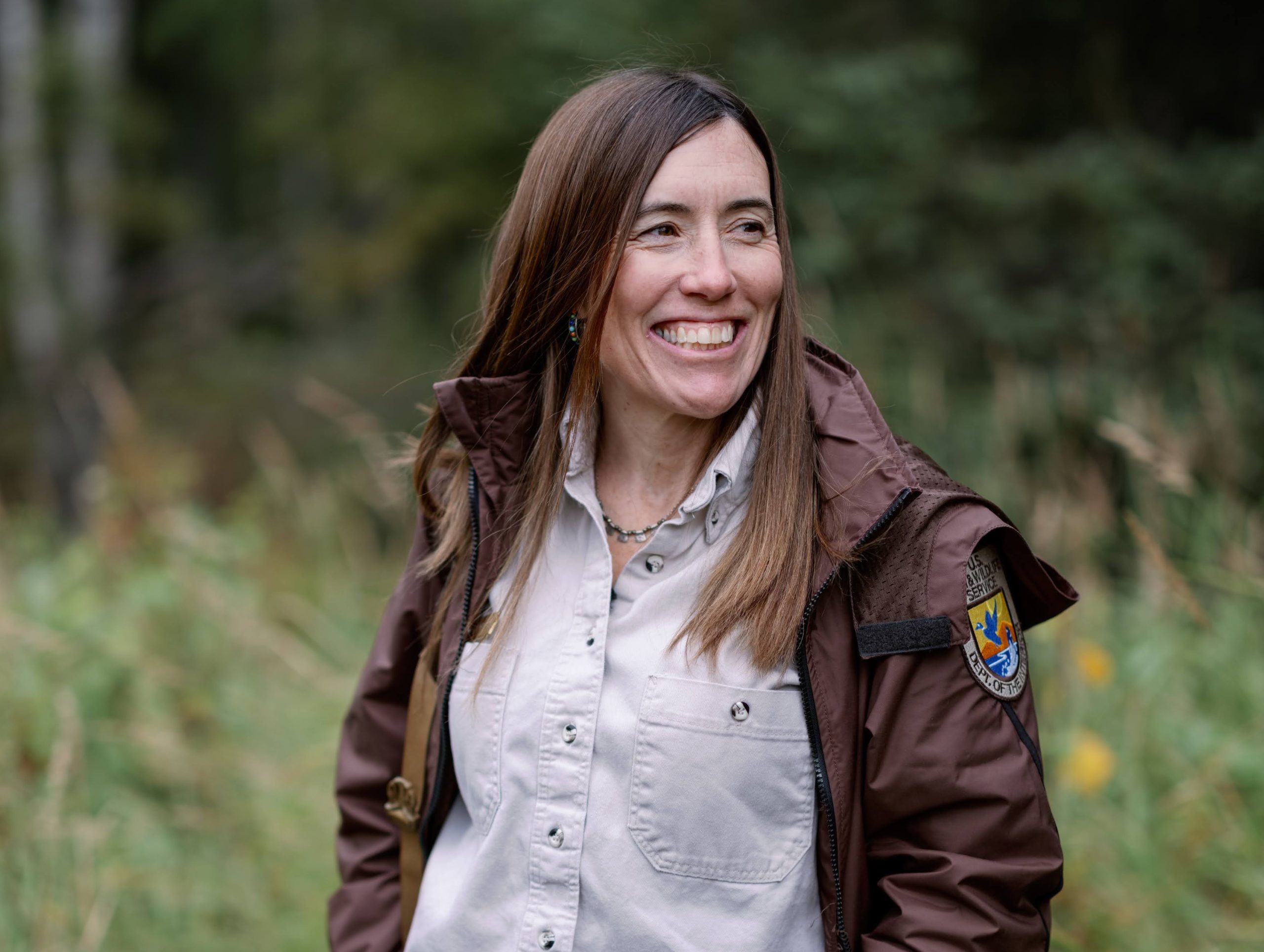
Kris Inman, Kenai National Wildlife Refuge Supervisory Wildlife Biologist
This meeting's presentations were recorded. Watch below:
Christina Nelson, Selawik National Wildlife Refuge:
Intro to Selawik
Kris Inman, Kenai National Wildlife Refuge:
Stewarding the Kenai National Wildlife Refuge
(This recording has been edited to include the wolverine footage that wouldn't play during Kris' presentation.)
This is a time of unprecedented, profound, and rapid human-driven environmental change. In her presentation, Kris will share a few of the Kenai biology team’s many projects that give a big-picture view of how wildlife populations and habitats might be changing or impacted by landscape issues like climate change and human population growth. Changing water temperatures in salmon streams, increased traffic on the Sterling Highway, more people living and recreating around the refuge and the spread of non-native species are a few of the human caused impacts to the refuge wildlife that Kenai biologists and agency partners are addressing.
Kris will share new technology like thermal imagery to document and understand the impact of water temperature changes on our world-famous salmon rivers that sustain bears, eagles, and people. She will also share results from the Refuge’s efforts to minimize the impact of increased human presence on the Kenai including the effectiveness of Alaska’s first wildlife road crossing project to provide safe movements for wildlife across the busy Sterling Highway which splits the Refuge. She will also highlight collaborative efforts to eradicate or control the spread of non-native invasive species like pike, elodea, white sweet clover, bird vetch, and reed canary grass that influences salmon habitat or encroach on native vegetation. In doing so, the biology team, working with refuge staff and many partners, will meet the station’s vision of stewarding the lands and waters with an eye to the future, so the Refuge's diverse and abundant wildlife remain for the enjoyment and well-being of generations to come.

Moose using the new Sterling Highway wildlife underpasses. Fences funnel wildlife to the underpasses of this increasingly busy highway. Kris will discuss what the refuge has learned about the effectiveness of this project.
Kris Inman recently joined the Kenai National Wildlife Refuge as the Supervisory Wildlife Biologist. Before coming to Alaska, she worked on a wide range of wildlife research and inventory and monitoring projects, from the little-known Tomah mayfly and freshwater mussels to more charismatic species like wolves, bears, and wolverine. Kris received a Bachelor of Science degree from the University of Maine and a Master of Science degree from Virginia Polytechnic Institute and State University.
She spent the last twenty years living, working, and raising her family in the lands outside of Yellowstone National Park, where she and her husband co-led a collaborative wolverine research study for the Wildlife Conservation Society. This project eventually would contribute the largest body of science on wolverines in the lower 48 and would identify the biggest conservation needs: to restore, connect, and monitor wolverines across their current and historic range.
From there, Kris switched from researcher to implementor. She worked with broad stakeholder groups in SW Montana to apply wolverine science in a region critical to wildlife connectivity for not only wolverines but also migratory ungulates and recovered grizzly bear and wolf populations. As the Coordinator of Strategic Partnerships and Engagement for the Wildlife Conservation Society, she brought stakeholders together to develop tools to reduce negative human-wildlife interactions. She also explored and implemented natural climate adaptation strategies like beaver mimicry to improve private working ranchlands' economic and ecological sustainability as critical corridors to public lands.
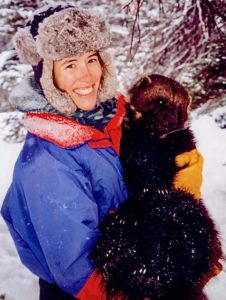
Kris holding a wolverine!
In 2018, the Disney Conservation Fund named Kris a Disney Conservation Hero for her contributions to science and engaging and empowering communities to take science to action. Kris was also selected as an American Association for the Advancement of Science IF/THEN® Ambassador, a network of 125 women STEM (Science, Technology, Engineering and Math) professionals from around the country who share their professional stories so young girls see that a career in STEM is possible.
Kris sees the Kenai Peninsula as similar to the Greater Yellowstone Area in its global significance as a large, intact, wild landscape, diverse in its wildlife while grappling with the challenges of rapidly growing nearby communities seeking solitude and world-renowned outdoor experiences.
Kris is glad to be a part of the Kenai Refuge and the larger refuge team in Alaska. She works with colleagues who recognize that conserving these great places will take a new future-oriented approach to conservation, and they are committed to developing solutions to meet the challenges of this century. At the same time, this work recognizes that people are part of nature and not separate from it. Seeing people in this light, we no longer just identify people as the problem but also the solution.

This meeting's presentation was recorded: watch below.
This recording does not include Jacqueline Cleveland's video (not yet released).
Christopher Tulik of the Yukon Delta National Wildlife Refuge and Jacqueline Cleveland of the Togiak National Wildlife Refuge, both Yupik, will present on their work as Refuge Information Technicians (RITs). Christopher’s intimate knowledge of the Yupiaq language and culture, the local area and the people make him a valuable liaison between the Refuge and those who live in the communities on and around the Yukon Delta Refuge. He travels by boat, snowmachine and plane to make personal visits to dozens of small subsistence communities. During the visits, he informs residents about Refuge-related conservation work, hunting and fishing opportunities, and other topics that are important to subsistence harvest. He also hears their concerns and local knowledge of fish and wildlife matters and ensures this is communicated to Refuge staff back at refuge headquarters. Jacki is new to her role as an RIT for Togiak National Wildlife Refuge. She will share with us the essence of subsistence life in her village of Quinhagak through her outstanding photography and videography.
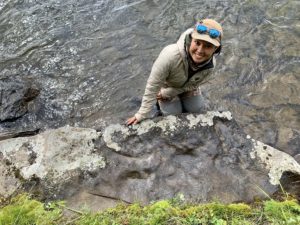
Jacqueline with sauropod dinosaur tracks on the Togiak Refuge.
Christopher Tulik was born in Bethel and raised in Nightmute, a small village on Nelson Island along the western Bering Sea coast of the refuge. Growing up in a traditional subsistence lifestyle has given Christopher an understanding of the importance of fish and wildlife to the culture of local Alaska Native people. Christopher has said he became interested in working with wildlife when he was very young and became aware of the fish and wildlife all around him that sustained his family in all seasons. He learned respect for nature from watching his father and older brothers returning from the hunt and how the catch had been properly handled.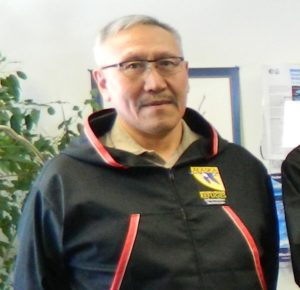 Christopher Tulik
Christopher Tulik
He was one of the youngest Refuge Information Technicians (RITs) hired when the program began in 1984. After a break, he returned to serve as an RIT in 2014 to assist the Refuge with outreach, education and tribal consultation. Christopher Tulik recently accepted a position as the Lead Refuge Information Technician (RIT) for the Yukon Delta National Wildlife Refuge. In this position Chris will supervise up to five permanent RITs. You can read more about Chris's life and work here.
Nalikutaar (in Yup'ik) or Jacqueline Cleveland was raised in Quinhagak, Alaska where she currently lives with her fiancé, Franko and dog, Pumba. Jacki received her Bachelor of Art’s degree from Montana State University in Media and Theatre Arts and Native American Studies. She is a subsistence hunter, fisher and gatherer, a freelance photographer/videographer, and recently accepted the job of Refuge Information Technician for the Togiak National Wildlife Refuge.
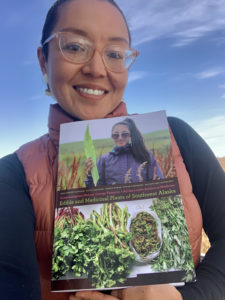 Jacqueline Cleveland with the book that features her photographs.
Jacqueline Cleveland with the book that features her photographs.
Jacki has had her photographs published in numerous publications most notably in the 2020 book from the University of Alaska Fairbanks press, Yungcautnguuq Nunam Qainga Tamarmi/All the Land's Surface is Medicine: Edible and Medicinal Plants of Southwest Alaska, for which she did most of the photography. Jacki recently completed a film project with BBC on Nelson Island in which she served as location manager. The segment on muskox in rut filmed on the island will be part of the Earth's Great Rivers II to be out this spring on BBC. Jackie is currently finishing up work on a film about climate change that she co-directed, served as cultural advisor for, as well as did some of the filming. Ellavut Cimirtuq/Our World is Changing will also be out this spring.
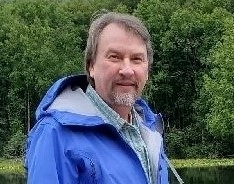
From Caribou Corrals to Seaplane Hangars: A Cultural Resources Overview of Alaska’s National Wildlife Refuges
Tuesday, October 19, 2021, 5-6pm (AKDT)
Jeremy Karchut, Regional Archaeologist/Regional Historic Preservation Officer USFWS, Alaska Region
Join us to discover the rich cultural and historic legacy of Alaska’s Refuges. Jeremy Karchut will provide an overview of the refuges’ vast array of cultural resources representing 14,000 years of human history. Sites range from those associated with the earliest humans to set foot in North America to mid-20th century aircraft hangars. Prehistoric archaeological sites in the Arctic, rock art on the Kodiak coast, historic cabins on the Kenai Peninsula, WWII battlefield sites in the Aleutians, and historic Fish & Wildlife Service (FWS) facilities critical to the agency’s Alaska mission are some of the cultural resources to be highlighted in this talk.
The FWS recognizes cultural resources as fragile, irreplaceable assets with potential public and scientific uses, representing an important and integral part of the heritage of our Nation and descendant communities. It is FWS policy to identify, protect, and manage cultural resources located on refuge lands. Jeremy will consider some of the challenges and rewards of managing these nonrenewable resources in an era of rapid environmental change and include highlights of key federal historic preservation legislation.
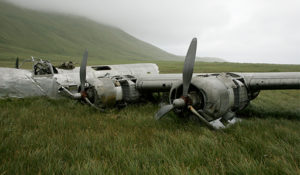
B-24D Liberator Bomber that crashed in 1942 on Atka Island, in what is now part of the Alaska Maritime NWR. Photo by Steve Hillebrand, USFWS.
Jeremy is the FWS Regional Archaeologist in Anchorage. He is interested in high altitude and high latitude archaeology and for more than 20 years he’s been involved with projects focusing on the effects of climate change on archaeological resources and what archaeology can teach us about how humans adapted to environmental change in the past. Jeremy is a native of Colorado, having earned a BA in Anthropology from Fort Lewis College, Durango in 1998, and a MA in Archaeology and Ancient History from University of Leicester, UK in 2003. He has served as a federal archaeologist since 1995, including with the US Forest Service and the National Park Service in the US Southwest, Central and Southern Rocky Mountains, Great Plains, and 12 years in Alaska.
This presentation was recorded; view below.

Arctic Refuge, A Symbol for a Time of Global Change
Please join us online or by phone Tuesday, January 19, 2021, 5-6pm (AKT), for our Friends monthly meeting with guest speaker, Roger Kaye of the Arctic National Wildlife Refuge.
Roger Kaye has done it all – worked the Slope, spent a winter on a trapline, flew his own float and ski planes, hunted, hiked, explored all over Alaska, wrote a book on the Arctic and earned a PhD at University of Alaska Fairbanks. He has spent much of his 41-year career with the Fish & Wildlife Service experiencing, thinking about and advocating for true wilderness, particularly of the Arctic Refuge. On this 60th Anniversary of the Refuge, Roger Kaye will share some of his vast knowledge and take us back to the seven-year struggle to establish the Arctic Refuge. He will explore the similarities with the struggle to defend the Refuge today.
 Olaus and Marti Murie, two giants of Alaska conservation and science,
Olaus and Marti Murie, two giants of Alaska conservation and science,
were instrumental in protection of the Arctic through the designation of the Arctic National Wildlife Refuge.
Arctic Refuge establishment was among the first, unprecedented American conservation initiatives of the 1960s that came about in response to concern over the worsening environmental degradations accompanying the prosperous postwar march of progress. The campaign to establish the Refuge became emblematic of the larger contest between competing views of the appropriate relationship between postwar American society and its rapidly changing environment. Which notion of progress should this landscape represent—that underlying the prevailing rush toward attaining an ever-higher material standard of living, or that underpinning the emerging ecology-based perspective that emphasized sustainability and called for restraint? The question of whether or not to preserve this preeminent wilderness symbolized “the real problem,” as campaign leader Olaus Murie characterized it, “of what the human species is to do with this earth.”
Now again we face a new order of environmental threat, a convergence of global energy and resource scarcity, climate change, and widespread biospheric alterations. And now the Arctic Refuge is at the center of one of the nation’s longest and most contentious environmental debates. The question of oil development verses wilderness preservation here transcends the issue of potential resource impacts within the Refuge’s boundaries and has become symbolically intertwined with these larger, global issues. Again, the Arctic Refuge stands as a national symbol of pivotal questions and decisions Americans face: How does our consumption and material standard of living affect the national and global environments, and what quality of them are we to leave to future generations?
Roger Kaye skipped his college graduation ceremony in 1974 to come to Alaska and work at Camp Denali for famed Alaskan conservationists Cecelia Hunter and Ginny Woods. He started grad school but dropped out to earn enough money working on the Slope to buy his first airplane. Once he met that goal, he took off on a series of Alaska adventures until the money ran out. Then, he started his wildlife career first with ADFG and for 41 years the Fish & Wildlife Service. He has been a planner, refuge pilot, Native liaison and in recent years, the agency’s Alaska wilderness coordinator. He has a Ph.D. from the University of Alaska where he has taught courses on wilderness, environmental psychology, and the Anthropocene. He is the author of Last Great Wilderness: The Campaign to Establish the Arctic National Wildlife Refuge and numerous journal and popular articles related to wilderness. Currently, he is working on a book considering the future of the wildness of Wilderness in the Anthropocene. Roger lives in Fairbanks and works for the Arctic National Wildlife Refuge.
This webinar was recorded. Watch below: